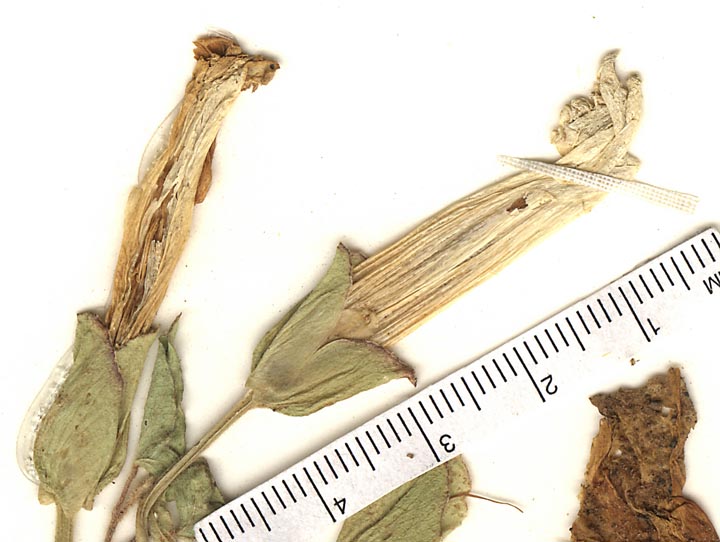
|
Family: Convolvulaceae |
PLANTS: Herbs. STEMS: twining to erect, glabrous or pubescent. LEAVES: glabrous or pubescent, ovate, the bases sagittate to hastate. INFLORESCENCE: axillary, of solitary flowers or few flowered cymes. FLOWERS: sepals equal, ovate, ovate-lanceolate to oblong, usually glabrous; corolla funnelform, white or pink, 3-6 cm long, glabrous or puberulent on the margins of the limb, especially the apices of lobes; stamens included, equal, the filaments sometimes with glandular trichomes basally; ovary ovoid, glabrous, 2-locular basally and l-locular apically, 4-ovulate, the style 1, glabrous, the 2 stigma lobes oblong, flattened. FRUITS: capsular, 4-valved, surrounded by enlarged sepals and sometimes by bracts. SEEDS: 1-4, glabrous, black to dark brown, smooth to verrucose. NOTES: Ca. 12 spp.; U.S. and Eurasia. (Greek: caly = beautiful + stegia = roof in reference to the bracts). Brummitt, R. K. 1965. Ann. Missouri Bot. Gar-d. 52:214-216; 1981. Kew Bull. 35:327-334. REFERENCES: Austin, Daniel F. 1998. J. Ariz. - Nev. Acad. Sci. Convolvulaceae 30(2): 61. Much like Convolvulus in aspect, but the bracts usually large, inserted just beneath the cal, and ±concealing it; pollen spheroidal, pantoporate with 20-40 apertures; ovary ±unilocular, the partition incomplete; stigmas oblong, ±cylindric, blunt; fls usually solitary; our spp. rhizomatous perennials. 30, widespread. Gleason, Henry A. & Cronquist, Arthur J. 1991. Manual of vascular plants of northeastern United States and adjacent Canada. lxxv + 910 pp. ©The New York Botanical Garden. All rights reserved. Used by permission. |
This project was made possible in part by the Institute of Museum and Library Services [MG-70-19-0057-19].
Powered by Symbiota



